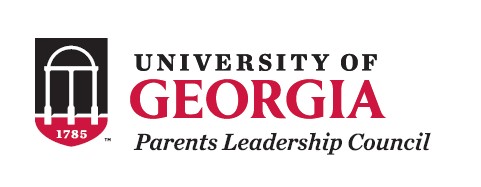featured projects
CED is involved in a wide variety of outreach activities as part of our classes, studios, and research. We engage our students in issues that directly benefit Georgia communities. Here are a few of the projects that speak to what we do best:
 RURAL HEALTH
RURAL HEALTH
CED has been a leader in improving quality of life issues for rural Georgia communities
for over 50 years. Therefore, we were well poised to join a community-engaged research
team led by our colleagues at the College of Public Health, the College of Agriculture
and Environmental Science, and Cooperative Extension in an initiative called “Healthier
Together”. Landscape architecture students are working in five rural Georgia counties
to develop design solutions the communities need to combat high rates of obesity,
such as access to healthy foods through community gardens and more opportunities for
exercise through sidewalks and bike paths to daily destinations. Read more
 HISTORIC PLACES
HISTORIC PLACES
Our Historic Preservation students develop an appreciation for the “big picture” of
entire cultural landscapes, exploring how our society may best sustain America’s most
treasured sites. Professor Cari Goetcheus led a community-engaged research effort
for Beech Haven, the rustic turn-of-the-century retreat hidden away on over 100 acres
right off of busy Atlanta Highway in Athens GA. Her students’ oral histories, documentation,
and mapping of important features – such as the stone pagoda lanterns, unique camelback
bridge, and the Summer House – helped cement Beech Haven as one of only two important
Arts & Crafts landscapes in Georgia. This work supported efforts by local partners
to secure this regional treasure as protected park space and a retreat for the public.
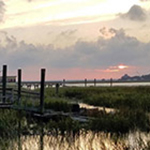 COASTAL RESILIENCY
COASTAL RESILIENCY
CED faculty and students are working to increase environmental resiliency on the Georgia
coast in a variety of ways. Our planning students had the opportunity to collaborate
with MAREX and the Carl Vinson Institute of Government on a sea-level rise Adaptation
Plan for Tybee Island to identify how more frequent coastal flooding affects low-lying
homes and roads, and present adaptation strategies. Two landscape architecture studios
used the strategies of this larger plan to develop site-scale design that sought to
balance conservation, recreation, and development to inform future planning efforts.
A partnership between CED and the Coastal Regional Commission has our planning students
and faculty conducting research and analysis on the protected saltmarsh of St. Catherine’s
Island to see how it is responding to the early stages of man-made development. Read more
 DOWNTOWN REVITALIZATION
DOWNTOWN REVITALIZATION
CED’s most well-known outreach program is our community design charrette model. These multi-day workshops can be used to begin solving a variety of community
concerns, such as downtown revitalization, corridor planning, parks and recreation,
and environmental management. A recent charrette involved all of these issues! CED
helped Hawkinsville envision a brewpub as part of their downtown revitalization strategy
with solutions that reused their historic industrial buildings and upgraded the neglected
riverfront park to include outdoor recreation – all qualities that brewpubs seek.
Read more
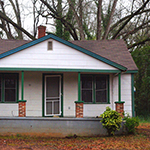 UNDERSERVED NEIGHBORHOODS
UNDERSERVED NEIGHBORHOODS
The Athens Land Trust and the Athens Housing Authority partnered with CED to explore
community-driven revitalization opportunities for the Rocksprings neighborhood, one
of the earliest settlements of freed African Americans in Athens. The goal of this
comprehensive planning process was to conduct meetings and interviews in order to
collect input from residents and community partners that would inform a revitalization
plan for the neighborhood and the West Broad school site. CED used service-learning
studios and a charrette to create a plan for targeted areas of improvement, action
items, and decision-making tools for the neighborhood. Read more
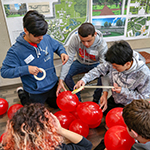 INSPIRING THE NEXT GENERATION
INSPIRING THE NEXT GENERATION
CED hosts field trips for local tenth-graders to showcase landscape architecture and
environmental design through the “Experience UGA” program - a partnership between
the Clarke County School District (CCSD) and the UGA Office of Service Learning. These
trips serve about 400 local sophomores per year. Our undergraduates lead three learning
modules that highlight the best aspects of landscape architecture studies – studio
life and creative problem-solving in a team, hand graphics and improving outdoor spaces,
and plant communities and campus design. Read more
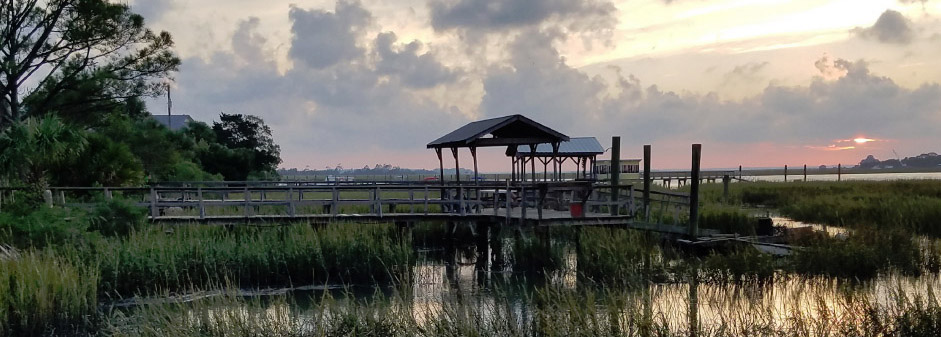
CED faculty and students are working to increase coastal resiliency on Tybee Island, a barrier island 20 miles east of Savannah. Tybee Island faces an uncertain future as it adapts to climate change, ecological depletion, increased tourism and overdevelopment. With an award-winning Sea Level Rise Adaptation Plan in place – developed by UGA’s Marine Extension and Georgia Sea Grant (MAREX), the UGA Carl Vinson Institute of Government and CED – the island’s leaders and residents are committed to science- and data-informed growth strategies.
In Fall 2016, Alison Smith’s undergraduate Region-Site-Place studio created a general master plan and site-scale design that sought to balance conservation, recreation, and development on Tybee Island. The project was informed by a sea level rise adaptation plan, existing conditions inventory, and GIS analysis. Later on, Doug Pardue’s undergraduate Urban Design studio used this analysis to apply a sea level rise strategy known as “adapt, retreat, protect” across the island region. They focused heavily on the triple bottom line (ecological, economic, and social impact) to facilitate their designs. Other major factors were changes over time and potential outcomes if another large-scale hurricane swept across the island. To read more about the studios' work, click here for a Georgia Landscape Magazine article written by our students.
Professors Rosanna Rivero and Jon Calabria have engaged with Tybee Island through their Public Service and Outreach faculty fellowships. Professor Rivero worked with MAREX and the Carl Vinson Institute of Government on the aforementioned Adaptation Plan to develop guidelines and performance measures for community resilience and planning for natural hazards. Since 2015, Professor Jon Calabria has worked with MAREX and his Ecological Landscape Restoration class to construct a living shoreline at the Burton 4-H Center on the island. Living shorelines encourage higher ecological function and reduce harmful bacteria that threaten water-based recreation. The project, completed over the course of two spring semesters, used bags of oyster shells to demonstrate how a living shoreline could be constructed for stabilization instead of armoring structures.
 Researchers have identified significant linkages between public health and the design
of the built environment, including impacts on physical activity, walkability, social
and mental health. While most design research centers on the re-design of cities and
other urban places, Georgia is predominately a rural state. With the 20th highest
adult and the 18th highest child obesity rates in the nation, rural Georgia needs
design interventions that are sustainable, community supported and cost-effective.
While better health outcomes through design is frequently touted for urban areas,
research neglects design and planning for rural communities.
Researchers have identified significant linkages between public health and the design
of the built environment, including impacts on physical activity, walkability, social
and mental health. While most design research centers on the re-design of cities and
other urban places, Georgia is predominately a rural state. With the 20th highest
adult and the 18th highest child obesity rates in the nation, rural Georgia needs
design interventions that are sustainable, community supported and cost-effective.
While better health outcomes through design is frequently touted for urban areas,
research neglects design and planning for rural communities.
The UGA College of Environment and Design (CED) has been a leader in improving quality of life issues for rural communities statewide for over 50 years. Therefore, CED was well poised to join a community-engaged research team led by University of Georgia colleagues at the College of Public Health, the College of Agriculture and Environmental Science, and Cooperative Extension in an initiative called Healthier Together.
The Healthier Together program is established in five rural Georgia counties that experience high rates of obesity. It is funded by the Centers for Disease Control and Prevention’s High Obesity Program (HOP) Grant, a nationwide effort between 15 land grant universities with community extension services. CED colleagues Donnie Longenecker, David Spooner, and Jennifer Lewis joined the HOP project in 2019 to add expertise in land design and construction, walkability, and community engagement. Longenecker’s senior service-learning landscape architecture studio (LAND 4050) is a key player in researching and developing conceptual design solutions for expressed community needs. For the counties in the Healthier Together program, this includes increasing access to healthy foods through community gardens at key locations and increasing opportunities for exercise through sidewalk connections and multimodal paths to daily destinations. Read more
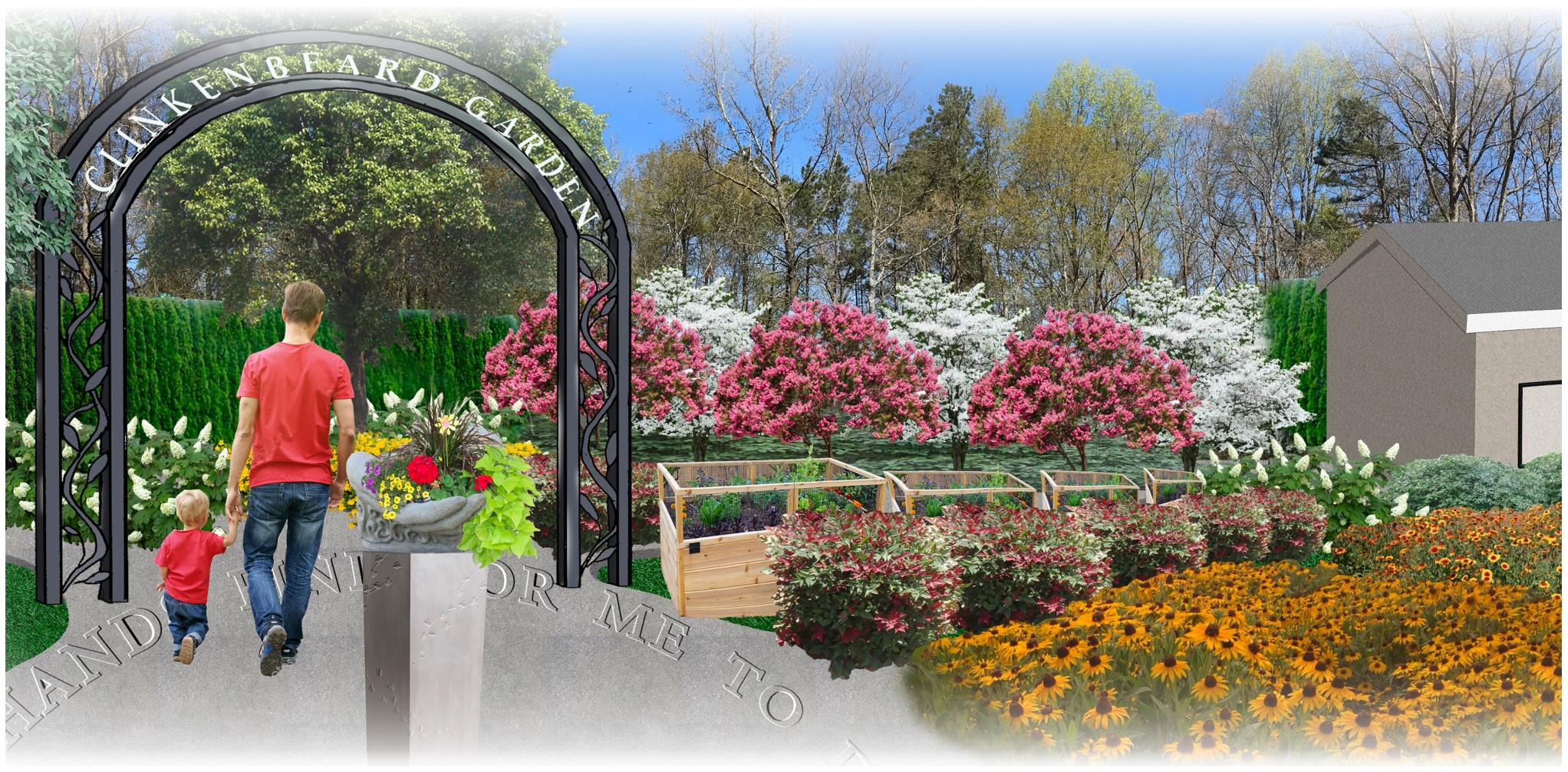
The College of Environment and Design partnered with The Ark Family Preservation Center in Franklin Springs, GA, to create a series of gardens that promote healing for families broken by destructive forces such as drugs and alcohol. Dr. Oxley, the founder of The Ark Family Preservation Center, requested that the healing gardens embrace the story of the ark and celebrate the memory or her grandmother, Clinkenbeard.
Professor Cannady’s “Land 6020: Site Applications” course was eager to partner on such meaningful project. Students were placed into groups of four and were asked to complete a design based on the requests made by Dr. Oxley. Student designs included Ark themed motifs, quotes from Grandmother Clinkenbeard, and interactive areas such as cut flower gardens and an oak where families can tie a ribbon to symbolize their time at the center.
The design graphics and ideas are currently being used by Dr. Oxley for fundraising and guidance as they move into the next stages of property development. Learn more about the Clinkenbeard Healing Garden here.
In February of 2013, the Athens Land Trust and the Athens Housing Authority partnered with the College of Environment and Design (CED) to explore community-driven revitalization opportunities for the Rocksprings neighborhood, one of the earliest settlements of freed African Americans in Athens. The Athens Land Trust is committed to the neighborhood and had recently executed a Memorandum of Understanding with the Clarke County School District to use the playground of the vacant West Broad School for a market garden and a training program for gardeners and entrepreneurs.
The goal of this comprehensive planning process was to conduct neighborhood meetings and interviews to use input from residents and community partners to inform a revitalization plan for the neighborhood and the West Broad school site.
In Spring 2012, professor Sungkyung Lee’s graduate landscape architecture studio inventoried design elements such as street patterns, sidewalk frequency, streetlight function and open space as well social behaviors such as crime, loitering, jaywalking and desire-line footpaths in the neighborhood. The second phase of the studio’s research was analysis of this data and suggestions for improvement, with a focus on the West Broad School and community garden.
The data gathered by Professor Lee’s studio informed the questions and interviews conducted in a Saturday community input session at the H. T. Edwards Complex on February 2, 2013, led by the Center of Community Design and Preservation and hosted by the Hancock Community Development Corporation. In total there were 75 residents and stakeholders who participated in small focus groups led by University of Georgia students from the CED, the Law School’s Community and Economic Development Clinic, and the Department of Family and Consumer Sciences’ Affordable Housing program.
The input session began by providing a neighborhood map and asking attendees to place green adhesive dots on areas of positive activity and red dots on areas that need improvement. Residents were also asked open-ended questions as to transportation and access to services, businesses, and amenities desired for the West Broad School site.
The data gathered at the public input session was mapped along with the public’s associated comments and compared with the inventory and analysis from the Lee studio. The combined data became guiding principles for a charrette held February 22-24, 2013. Among them were decreasing the perceived or real fear of crime; providing safe, walkable streets; respecting and using the power of the faith-based organizations in the area; attracting and retaining neighborhood-oriented businesses that are easy to access and keep prices low; and reusing the Old West Broad Street School in a community supportive way.

Guided by feedback from residents and partners, the charrette focused on key target areas:
Old West Broad School | Maintain the existing campus, improve the courtyard, create a better connection between parking and garden areas, rehabilitate the buildings for community-related services.
Magnolia St. | Implement speed tables between stop lights and install a radar speed sign to slow down existing traffic.
The Old American Legion Building | Use creative public-private partnerships to rehabilitate the building as a community center or other functional resource.
St. Mary’s Pathway | The addition of stairs and a switchback ramp would increase accessibility between the neighborhood and the retail healthcare establishments on Baxter Street.
The result is a plan for targeted areas of improvement, action items, and decision-making tools for the neighborhood, including a Geographic Information System (GIS) to be used by decision makers and county planners.

CED hosts field trips for local tenth-graders to showcase landscape architecture and environmental design through the “Experience UGA” program - a partnership between the Clarke County School District (CCSD) and the UGA Office of Service Learning which aims to bring every PreK-12 student to UGAʼs campus every year for a curricular-based field trip. These trips serve about 400 local sophomores per year.
A core tenant of design-thinking was used to develop the field trips - first, empathize with the user. In other words, think like a tenth grader! They are most interested in being with friends, being outside; they enjoy a little competition; have a new sense of independence in driving; and would like to hear from college students, not grown-ups. They would appreciate learning how an interest in art and creative expression could be a career.
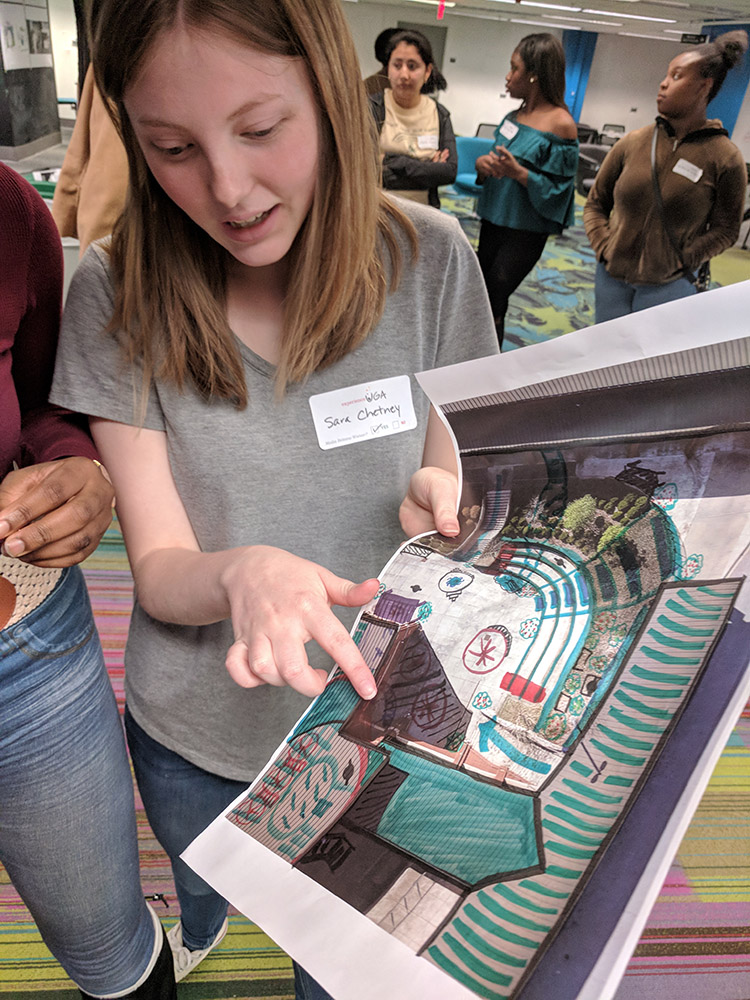 Using these guiding principles, three modules were developed that highlighted the
best aspects of landscape architecture studies – studio life and creative problem-solving
in a team, hand graphics and improving outdoor spaces, and plant communities and campus
design.
Using these guiding principles, three modules were developed that highlighted the
best aspects of landscape architecture studies – studio life and creative problem-solving
in a team, hand graphics and improving outdoor spaces, and plant communities and campus
design.
The high schoolers toured the Jackson Street Building studios and saw projects in progress, learned about the LEED features of the building, and participated in a team challenge to build the tallest, free-standing balloon tower! In the fourth floor study room of the Main Library, they used the whiteboard-lined walls to practice plan-view hand-graphics and redesigned a neglected part of their high school’s campus. They also took a walking tour of UGA’s north campus to learn fun facts about plant species, campus quad design, architectural history and UGA campus traditions.
Teachers said that their students enjoyed “the hands-on activities, the casual and relaxed space they got to eat lunch in [JSB crit room] and enjoy being together, the expertise and engaging-ness of the student hosts, and the exposure to a field that combines so many elements of creativity and art with science and environmental considerations.” Another said, “I enjoyed watching my students work together to create the balloon structure [and] see students get along with students who they normally don’t talk with at school.”
Our experiential learning field trips are made possible by our CED undergraduate student leaders, who always make them creative and fun and engaging!

This program is supported by a 2022 grant from the University of Georgia Parents Leadership Council. Thank you!


